20 Highlights of our Transylvania Experience
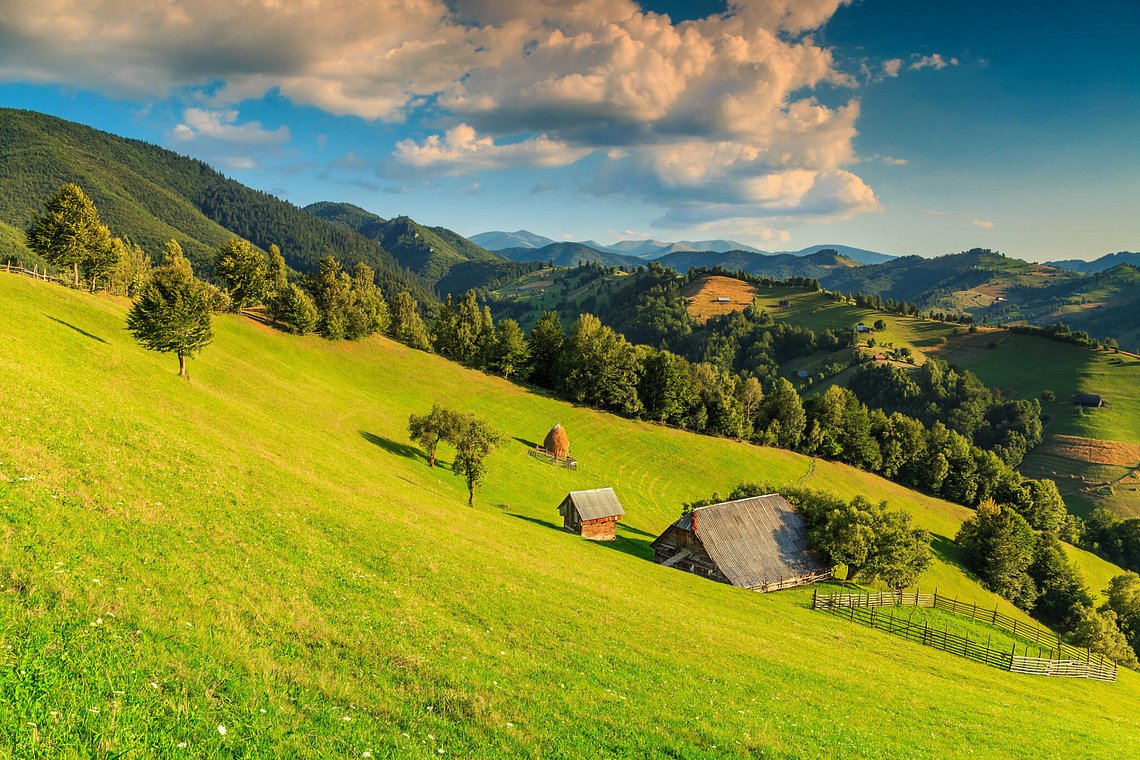
Posted on Sun 31 Oct 2021 · by James Chisnall & Marion Poerio
A week-long escape to Transylvania, complete with experiencing the simple, rural life, visiting charming towns and spotting mighty brown bears. A mixture of traditional accommodation in local villages and visits to the medieval towns of Brasov, Sibiu and Sighisoara where you’ll enjoy the comforts of boutique accommodation, you’ll experience the very best that Transylvania has to offer. The Transylvania trips also include entry to the impressive castles of Bran and Peles, as well as the Libearty Bear Sanctuary in Zarnesti, and we can even arrange for you to visit the bear hide and bear tracking excursions as an additional extra.Take a step back in time and get involved with local village activities in Viscri including horse and cart rides, hay-stacking and traditional bread-making along with visits to the blacksmiths, and other local crafts.
Here we’ve listed a whopping 20 highlights from this incredible 7-night experience.
1. PALACE OF THE PARLIAMENT
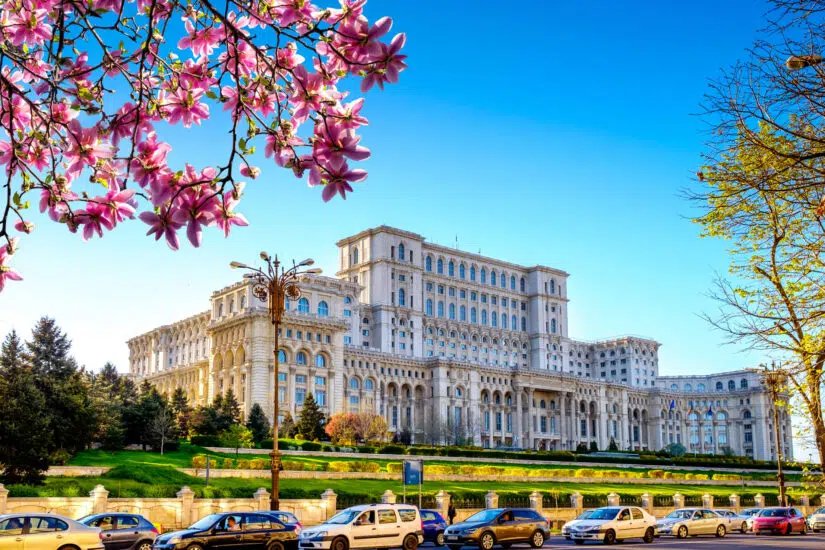
Billed as the most famous and most controversial building in Romania from the legacy of Ceausescu, the extravagant Palace of the Parliament is well worth a visit. At 86m high and 92m deep, this grandiose structure is the world’s second-largest building behind the Pentagon and is where Romania’s parliaments sits today. Commonly known as the People’s Palace, the building contains an incredible 1,100 rooms that are spread across 12 floors both above and below ground level. Despite being home to Romania’s Museum of Contemporary Art, the vast majority of the palace sits vacant and remains unused. If you decide you’d like to take the public tour of the building you’ll need to remember to bring your passport or driving license with you, and it might be worth asking a member of the UTP team to make the reservation for you as opening hours can be a bit erratic. Inside you’ll be greeted by offensively large marble-plated halls, enormous sweeping staircases and some rather out-of-place conference rooms. The trip onto the wide roof terrace is probably the highlight of the tour as it offers incredible views over the sprawling capital city.
2. BUCHAREST CITY TOUR
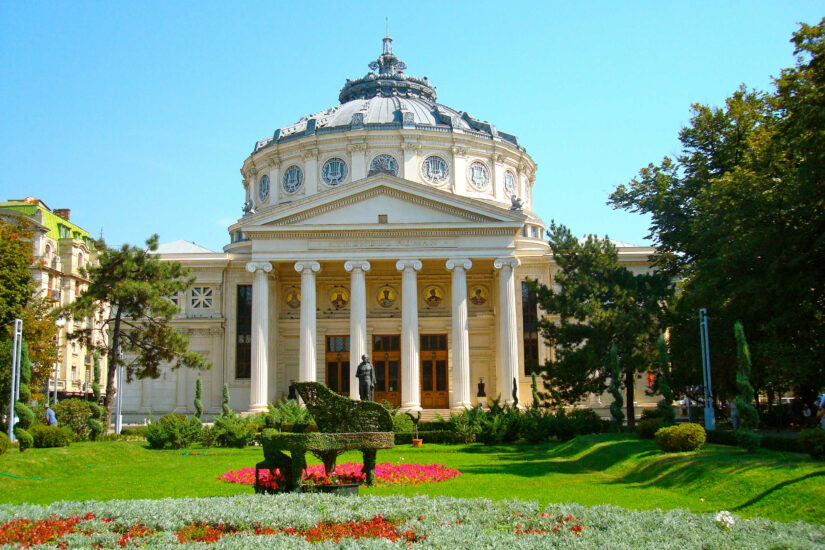
Experience Bucharest on foot and let your guide help unravel the stories behind the eclectic mix of architecture and fascinating Communist history while your map stays in your pocket and the city. An interesting way to understand the country’s turbulent past and also a fantastic opportunity to help you get your bearings of the city.
3. CARU CU BERE
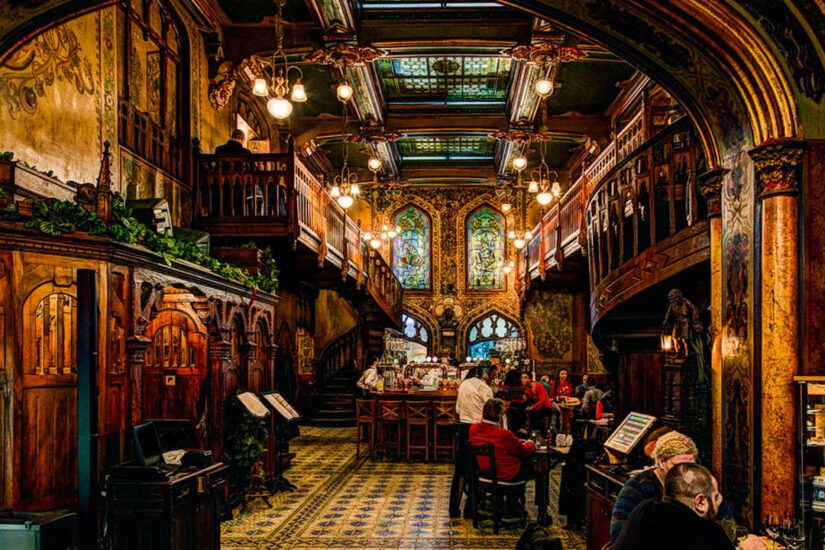
Caru cu Bere, literally The Beer Wagon, is the place to come for traditional Romania fare in Bucharest. Dating back to 1879, the place is constantly buzzing and is worth visiting for the stunning interior alone, which boasts painted ceilings and ornate woodwork. Appetising traditional dishes are on offer, local wines are served and of course, there is beer, plenty of beer. We love the old newspaper-style menus and recommend the bean soup with smoked bacon and red onion to start then a variety of mixed platters to share so you get a taste of a variety of Romanian specialties. The Romanian pork shank served with pan-fried sauerkraut and polenta is excellent and don’t forget to order a shot of palinka to toast your meal! On Friday, Saturday and Sunday evenings a well-known folk-song and dance ensemble will serenade you with traditional Romanian music and entertainment and although it can be a bit touristy, it’s also great fun. Service can be a bit slow but cheap prices and enjoyment value more than makeup for it! Due to its popularity, it can be worth reserving a table in advance although if you don’t manage to book, do stop at the bar for a local beer and to soak up the atmosphere first.
4. LINEA
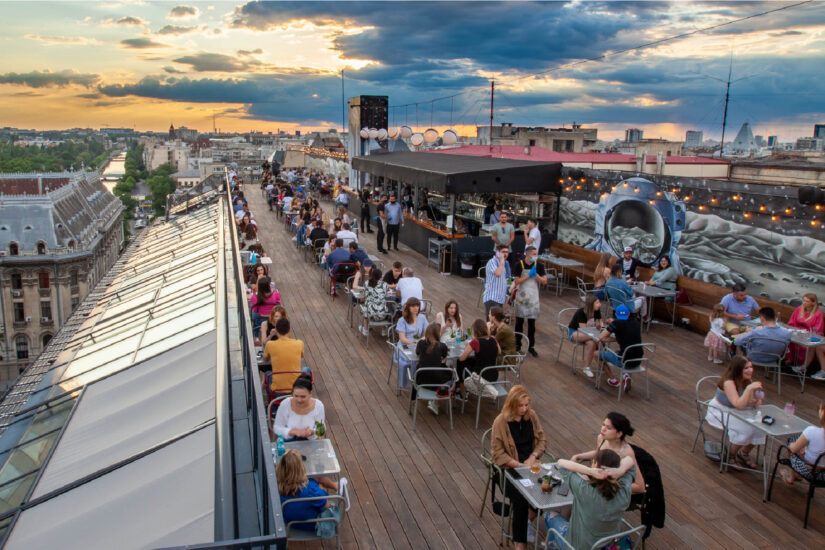
The open rooftop terrace will make you feel like you’re on top of the city. Head over here at dusk for wonderful views over the Dambovita river as the sunsets. It’s the perfect place to unwind and relax with a drink after a long day wandering around Bucharest. There is also a food menu available for some pre-dinner snacks – the chicken skewers with long, curly fries are delicious!
5. PELES CASTLE
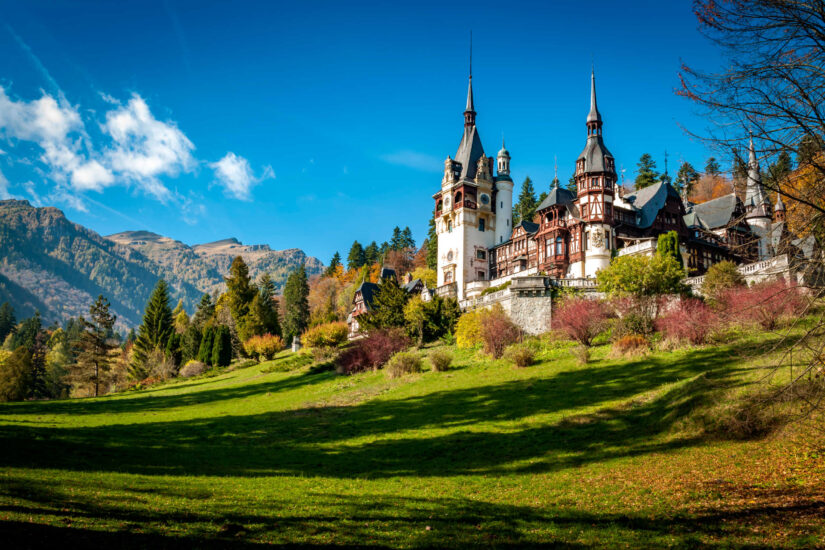
Located in the mountain town of Sinaia, the magnificent Peles Castle is one of our top highlights in Romania. Built between 1875 and 1883 for King Carol I as a royal summer residence, Peles Castle cost over 16 million gold lei to construct, the equivalent of which works out at around £10 million today! Set against a stunning alpine backdrop at the foothills of the Carpathian Mountains, the exterior of the castle is like something out of a fairytale with its spiked turrets, pointed towers and marble statues, elevated over acres of fields and meadows. The interior is even more magical still. Its 160 rooms are ornately and opulently decorated with stained glass windows depicting fairy tales, huge arched doorways, endless tapestries carpeting the marble floors, secret passageways and even a wooden stairway leading to nowhere. Peles was also the first castle in Europe to boast electricity, central heating and vacuum cleaning systems all of which are still working today, and houses Romania’s first cinema room with original paintings from a young Gustav Klimt. Stretch your legs with a stroll around the grounds before heading inside to explore the castle with a guided tour of the stunning interior.
6. BRASOV
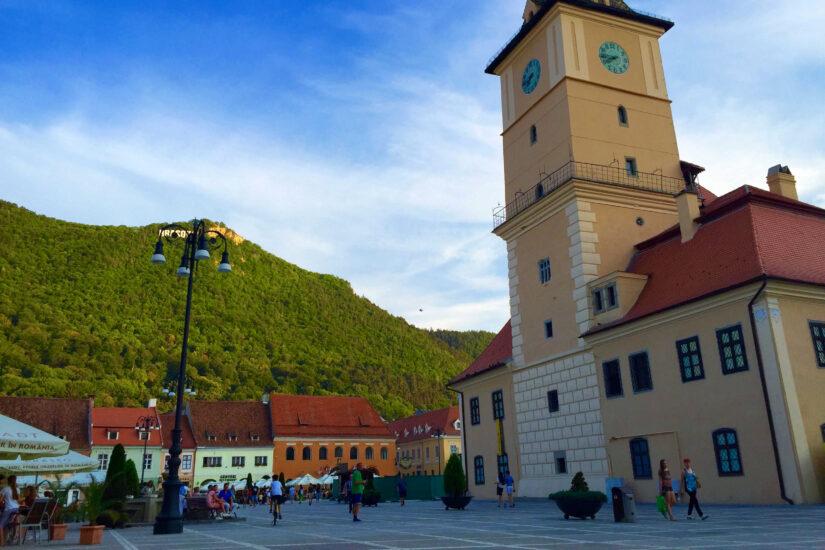
Nestled in the foothills of the Carpathian Mountains and known as the gateway into Transylvania, the medieval Saxon town of Brasov is an absolute gem. A world away from the lively buzz of the capital city, Brasov provides the perfect base for exploring the Transylvanian countryside with its rural villages, fortified churches and thick forests as well as the infamous Bran Castle, the would-be residence of mysterious Count Dracula. Set against a beautiful mountain backdrop and rich in the clean fresh air, the pace of life in Brasov’s Old Town is noticeably slower and more relaxed than in Bucharest and is the ideal location forthose who prefer to take in the atmosphere at a leisurely pace, ambling around the cobbled streets, stopping for a drink in one of the clusters of quaint cafes or heading to a restaurant for lunch or dinner. The town’s distinctive medieval ambiance is reflected in its striking examples of gothic and baroque architecture, the most prominent of which has to be the Black Church with its smoke-blackened walls and looming presence over the beautiful old square in the heart of the town. All the sights worth seeing in Brasov are accessible by foot including the narrowest street in Europe and the climb up to the top of the Black Tower where the entire city unfolds before your eyes.
7. BLACK CHURCH
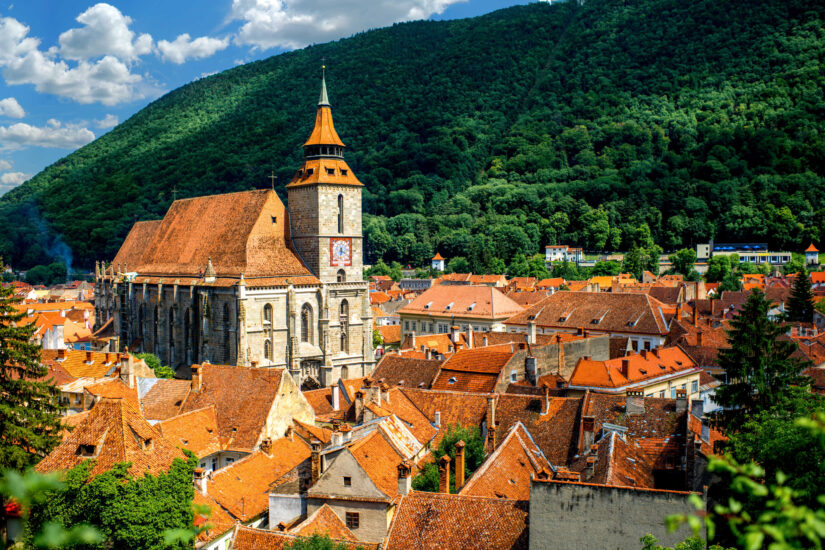
Looming over Brasov’s main old town square, it’s hard not to spot the imposing Black Church, which is said to be the largest church between Vienna and Istanbul. This stunning example of Gothic architecture dates back to 1477 and actually acquired its name after being blackened by smoke from the great fire of 1689, the restoration of which took nearly 100 years. As a result, the interior of the church is now mainly in Baroque architectural style but boasts the largest organ in Eastern Europe with a whopping 4000-pipe organ that dates all the way back to 1839.
8. THE BELLA MUZICA RESTAURANT
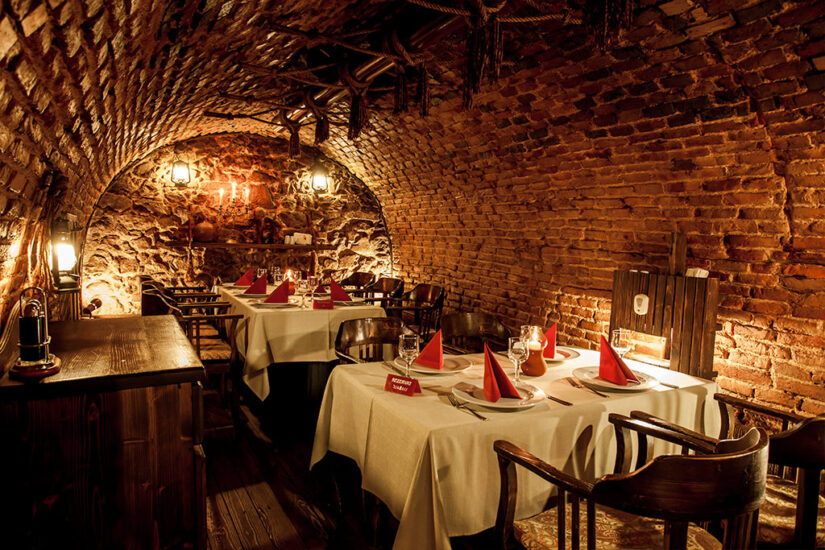
Occupying the catacombs of the Black Church, this low-ceilinged cellar located in the hotel of the same name is perfect for a cosy evening meal complete with exposed brickwork and candlelight. The menu offers a strange combination of Hungarian and Mexican dishes at very reasonable prices. Go for the fajitas or the bean soup in bread, and beware of the handmade tortilla chips, they are delicious and very moreish! You can even order the soundtrack to your meal on the music menu. Make sure you’re not seated in area under the stairs, it isn’t half as cosy as the main seating area under the curved brick ceiling, and doesn’t have quite the same atmosphere.
9. DEI FRATI
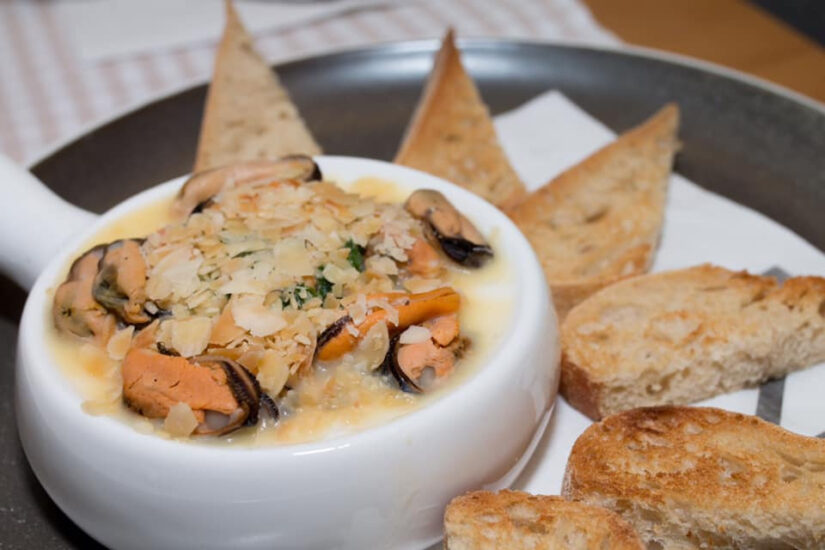
A top-quality Italian restaurant serving up the freshest, homemade pasta in town (among other foodie delights)! This little gem is tucked away on an atmospheric Brasov backstreet boasting a cool, contemporary interior that always seems to be buzzing! Grab yourself a lovely bowl of perfectly cooked pasta and a glass of wine. You won’t regret it. Friendly atmosphere, great family-driven service and an excellent option for vegetarians too.
10. BRAN CASTLE
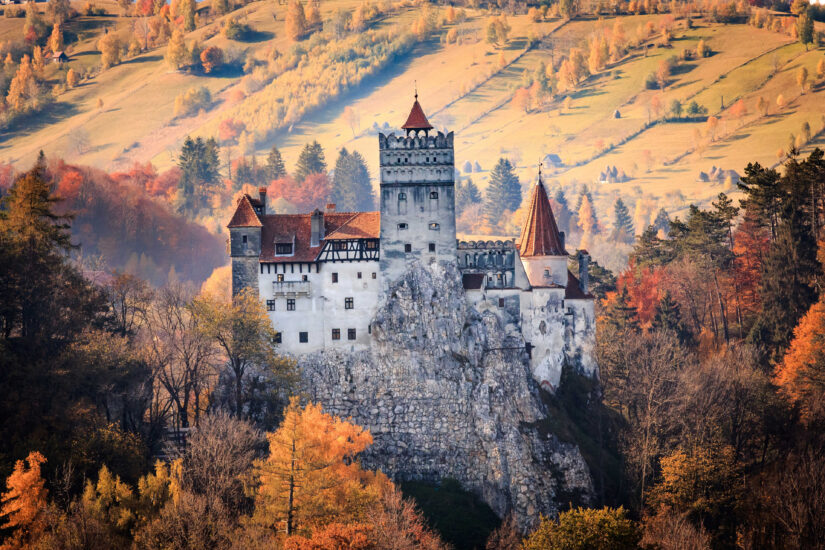
Perched high atop a rocky plateau with imposing spiked turrets and blood-red towers, Bran Castle looms eerily over Transylvania cloaked in myth and legend. Commonly known as Dracula’s Castle, the 13th century castle is the real-life setting of Bram Stoker’s sinister novel and the would-be residence of Count Dracula himself. Despite being a fictional character, Dracula was based on the Wallachian prince, Vlad Tepes also known as Vlad the Impaler, who allegedly spent some time at the castle during his bloodthirsty reign of terror. Dark narrow stairways wind through the castle connecting underground passage, watchtowers that served as dungeons, and 57 rooms housing collections of Gothic furniture, weapons and armour dating all the way back to the 14th century. We have to admit that Bran isn’t our favourite castle in Romania and probably doesn’t live up to the hype but it’s a box-ticker and you can’t really leave without having a look!
11. THE LIBEARTY BEAR SANCTUARY
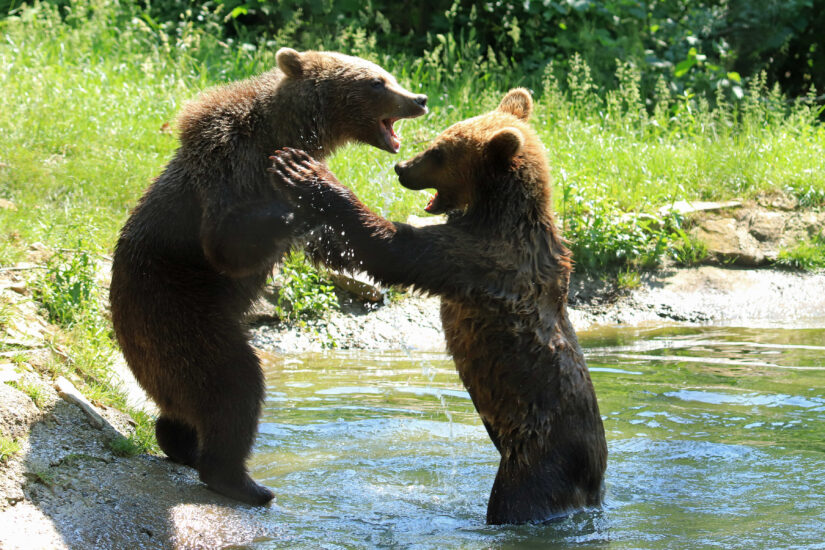
Constructed in 2005 with the help of the World Society for the Protection of Animals (WSPA), the Libearty Sanctuary is based near Brasov and is home to over 70 brown bears that have been rescued from appalling conditions in captivity. These poor animals were often found suffering in tiny, rusted cages around the country where they would be used for ‘entertainment’ purposes, living on a poor diet and little or no veterinary care whatsoever. The sanctuary itself is a haven of oak and hazel forests, streams and pools set over 173 acres in the Carpathian Mountains, divided into large forested enclosures containing hibernation dens and hundreds of trees where the bears enjoy climbing, foraging for natural vegetation, nuts and berries and cooling off in pools of water that are scattered across the lush grounds. During the tour you’ll be introduced to the bears and will hear about their individual stories from captivity to rescue. Although you’re likely to get a good look at the bears from a safe distance it is important to note that the sanctuary is not a zoo and the welfare of the animals is the main priority so while many of the bears will choose to rest near the fences or play in the open meadow areas, they may also prefer to remain within the privacy of the forests. Monetary donations all fund the running of the sanctuary and you can even adopt a bear via donation online at www.ampbears.ro for around £60.
12. VISCRI VILLAGE
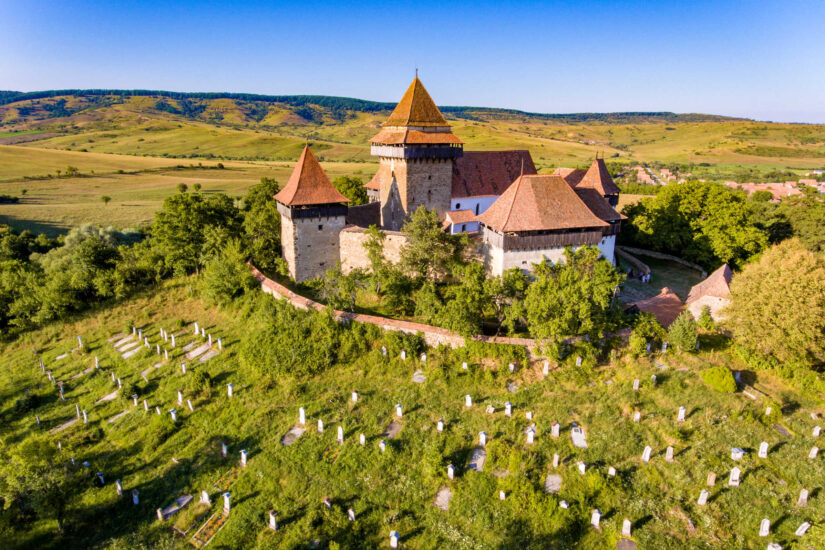
Located 30km fromSighisoara, Viscri is most famous for the fortified church that rests at the heart of the tranquil village. Dating back to 1100, the fortified church is the oldest in Transylvania and allowed the Saxon village of Viscri to be declared as a World Heritage Site by UNESCO in 1993. The village also caught the eye of the Prince of Wales, who bought an 18th century Saxon house in Viscri in 2006, restoring the property into a gorgeous guesthouse with the aim of promoting sustainable tourism in the area. The building still retains its original architecture and showcases various Transylvanian antiques as well as containing modern, up-to-date fittings and furnishings. The village courtyards feature small coffee shops and artisan boutiques selling hand-made crafts and local goods including gorgeous knitted socks and jars of their famous mulberry jam. Tucking into a simple, traditional lunch at a local house is a must! A leisurely stroll up through woodland and hills gives way to a view of traditional charcoal pits, wool-spinning workhouses, sheepfolds and other time-honoured establishments. There is even a working well! Whatever you do, don’t miss out on having a peek inside Viscri’s fortified church, it’s the oldest in Transylvania! A visit to Viscri provides an authentic glimpse into rural Transylvania and the lives of its humble inhabitants so take your time to soak in the by-gone atmosphere of the place.
13. BALEA LAKE & TRANSFAGARASAN
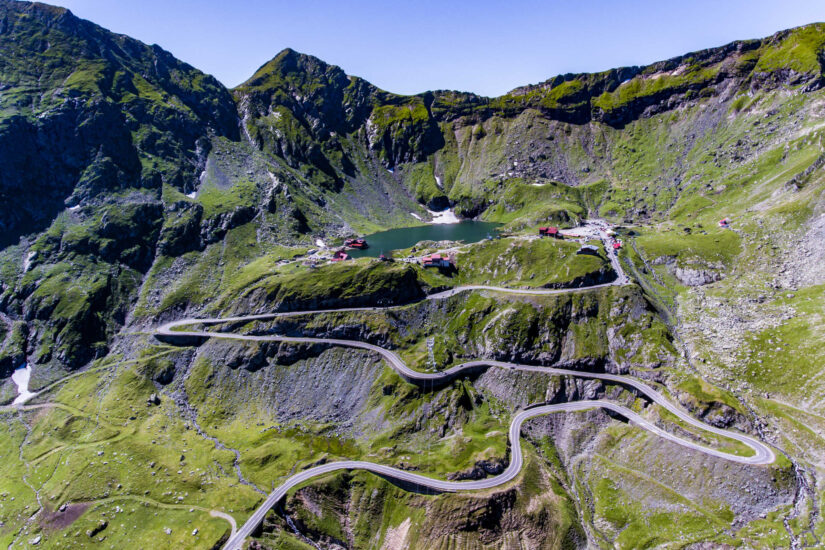 Transfagarasan and Balea Lake aerial view
Transfagarasan and Balea Lake aerial view
Perched high up in Transylvania’s Fagaras Mountains at an altitude of 2,034 meters, the glacial Balea Lake is a stunning location that will take your breath away with its changing facades throughout the year. In the summer, the lake is reached via the Transfagarasan, a twisting snake of a road that has earned its title as ‘the best road in the world by Top Gear’s Jeremy Clarkson. The rugged alpine scenery at the top is a beauty to behold and is made even more ethereal thanks to the lake’s serene and crystal clear waters. Outdoor activities include hiking, walking and enjoying the fresh mountain air while the Balea Lake Chalet provides a wonderful spot for lunch right on the water’s edge. As winter arrives and temperatures in the mountains begin to plummet, the lake gradually freezes over and its calm emerald waters are transformed into thick ice. Huge blocks of the icy lake are then cut and dragged to the location of the Ice Hotel where the construction process begins. In a matter of weeks, part of the frozen Balea Lake is transformed into a beautiful and uniquely designed hotel of ice with its very own Ice Church, Ice Restaurant and Sub Zero Ice Bar. The frozen lake is only accessible by cable car during the winter months until the ice melts and the Transfagarasan reappears. You may have to make plans to come back in the winter to see it in all its wintery glory! Please note that the Transfagarasan is closed from November until May, so it is not a part of the itinerary if you are traveling during these months.
14. BEAR HIDE VISIT
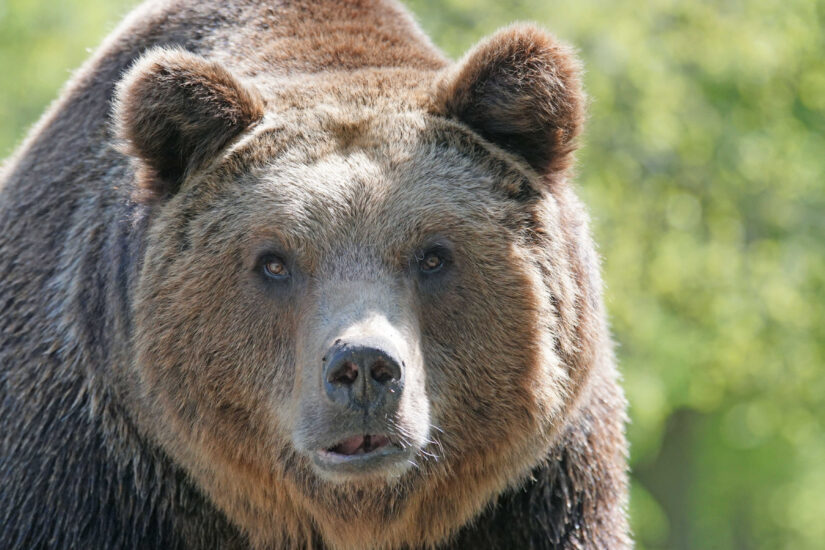
If you’ve always wanted to see a bear, now is your chance. Taking place in the evening during the last few hours before dusk, a trip to the Bear Hide is a great opportunity to spot wild Brown Bears (ursos actos) in the forests of the Carpathian Mountains. The hide itself is effectively a tree-house observation cabin where you sit and wait for the bears to come and feed. Foresters leave tempting morsels of food around the area with the aim of attracting the bears over for a feast so all you have to do is sit tight and wait for them to show up! In ten years we’ve only had a handful of rare instances where bears weren’t sighted so there’s a high probability that you’ll get a glimpse. In fact, the last time we were up at the hide, we had a huge brown bear come within ten metres of the cabin! Depending on which hide the tracker chooses to use, it can be between a ten-minute to a thirty-minute walk to the hide location, so please ensure you’re wearing suitable footwear. You’ll also need dark clothing and some layers for when the sun goes down!
15. RASNOV FORTRESS
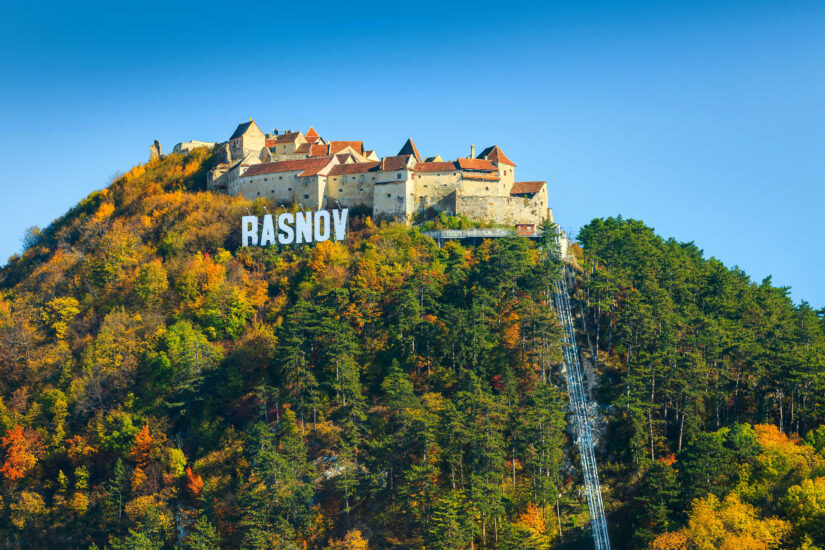
Located on a rocky hilltop in the Carpathian Mountains, the crumbling fort of Rasnov towers at nearly 200m over the sprawling Transylvanian countryside below. The fortress was built in 1215 by Teutonic Knights and was used a defensive stronghold against the invading Tartar army with its nine towers, two bastions and drawbridge. It was said to be owned by Vlad the Impaler’s grandfather, Mircea the Old. Throughout its history, the fortress was only forced to surrender once in 1612 when invaders located and cut off the citadel’s hidden water source after which it was decided that the construction of a well was the only way to provide safe access to water within the castle walls during sieges. Local legend has it that two Turkish prisoners were tasked with the job in exchange for their freedom upon completion of the well. Starting in 1623, it took the two men 17 years to dig the 143m deep well through the solid rock in the centre of the citadel and they were still executed. Poor chaps! The last siege of Rasnov Fortress took place in 1690 during the final Ottoman invasion of Transylvania. Damaged by fire in 1718, it was rebuilt the following year but damaged yet again by an earthquake in 1802. The fortress was then used as a place of refuge during the revolution of 1848 and was later abandoned. Nowadays, the remains of the old fortress are a pleasure to wander around with maze-like rooms connected by old wooden ladders, secret passageways, and even a museum boasting a skeleton buried beneath a glass floor along with some other interesting artifacts.
16. SIGHISOARA
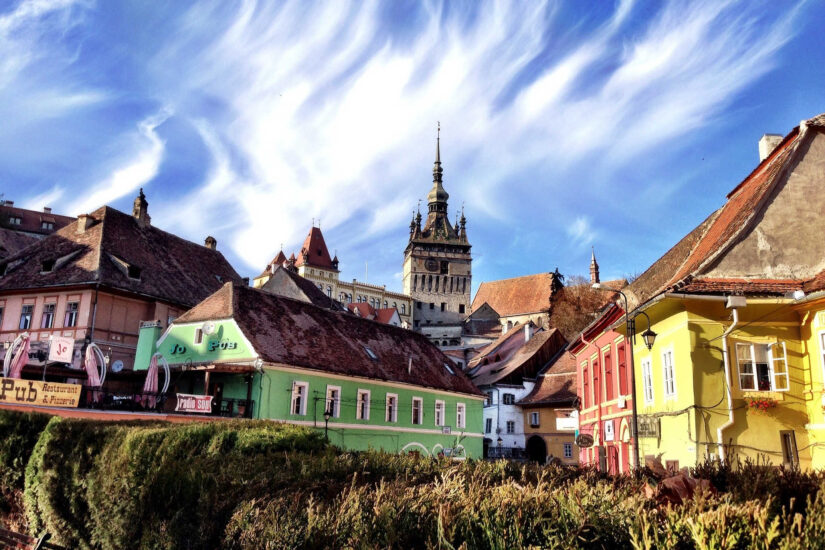
Aside from being the birthplace of Vlad the Impaler, the inspiration behind Bram Stoker’s cult classic Count Dracula, Sighisoara has been crowned a World Heritage Site by UNESCO and has become the most popular Saxon walled citadel in Transylvania. Founded during the 12th century, the fairytale town has been lovingly preserved over the years and still showcases the beauty of its original architecture, burgher houses and ornate religious buildings, making it one of the most beautiful medieval towns in Europe. Its historic cobbled streets weave their way over secluded alleyways, through tranquil squares, up and over impressive stairways and out to a view of the powerful towers and turrets that pepper the hillside and spell the town’s rich and colourful past as a Saxon fortress. Highlights include the Church on the Hill which boasts a collection of stunning ancient frescoes, the 13th century Venetian House and the Church of the Dominican Monastery which is famous for its architecture and ornate Transylvanian renaissance furnishings that date back to the 17th century. Most of all though, Sighisoara’s blend of fairytale magic and charming history makes for a beautiful experience that captures the imagination of its visitors who are transported back in time for a morning or an afternoon.
17. SIBIU
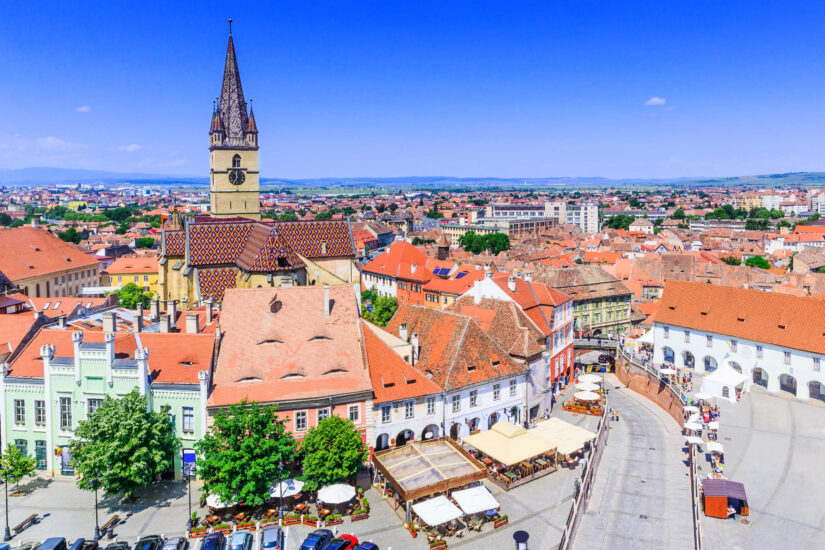
Set in the heart of the Transylvanian countryside, the beautiful 12th century Saxon town of Sibiu represents one of the most charming areas in Romania. The winding cobbled streets, brightly coloured traditional houses and decorative bridges of the old town come together to create a picturesque chocolate-box town that provides a fairytale-like setting. As the official European City of Culture (2007), Sibiu boasts the best-preserved architecture in Romania and its three main squares are divine with their charming façades painted in shades of warm apricot, pea green, sky blue and sunshine yellow. The quaint back alleys and stunning church-adorned squares provide the perfect opportunity to soak up the atmosphere pausing for refreshments in a string of wonderful cafés, bars and restaurants dotted in and around the main squares. Look out for the eye-like turrets poking out from the tiled roofs – you’ll start seeing them everywhere! The walking tour is the perfect way to explore this historic city.
18. ASTRA OUTDOOR FOLK MUSEUM
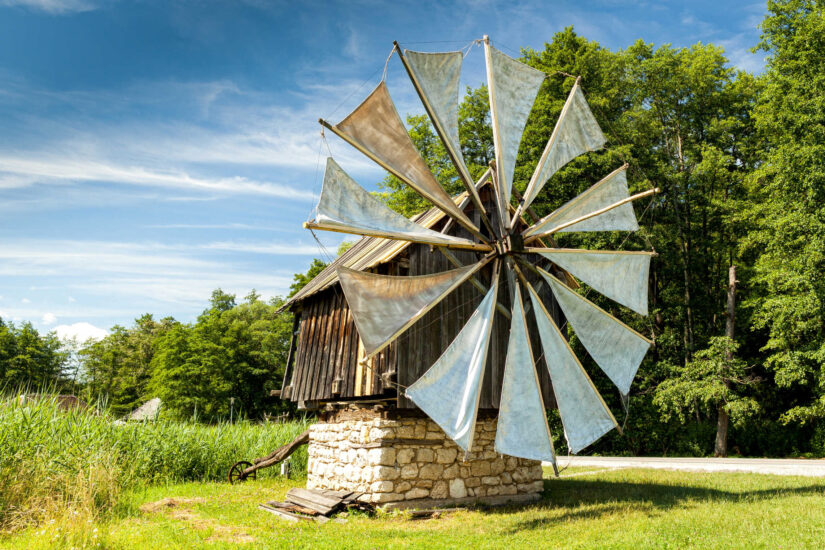
Windmill in open-air Astra museum in Sibiu, Romania
Far more than your average museum, this traditional folk civilization museum is undoubtedly the best in Romania and its true-to-life collection of time-honored establishments offers a wonderful glimpse into rural Romanian lifestyle and tradition. Spread across 96 acres in a beautiful outdoor setting, the museum boasts over 300 traditional dwellings representative of typical village architectural styles from all corners of Romania including wooden church, sheepfolds, two traditional inns, watermills, huge wine, oil and fruit p resses, hydraulic forges and farmhouses.The information signs will show you whereabouts in Romania each lodging comes from along with explanations of the history and structural elements of all the various houses, churches, watermills and stables. For those that are interested in learning more, guided tours are available as well as rides through the complex on a traditional horse and cart. However, you choose to explore this wonderful open-air museum, make sure you give yourselves plenty of time to wander around. It is absolutely beautiful especially when the sun is shining!
19. HERMANIA
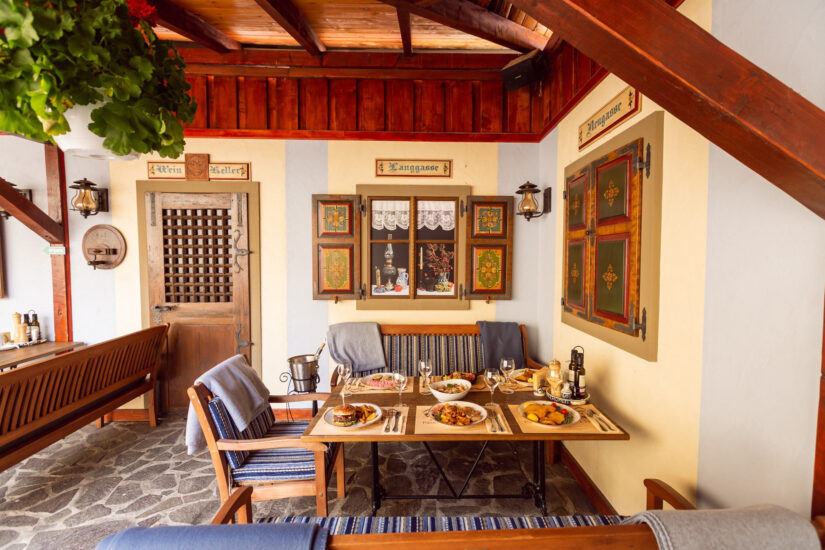
Tucked just around the corner from Piata Mare, this is traditional Germanic food at its very best and is wonderfully cosy, especially if the weather is a bit chilly outside. Warm and vibrant atmosphere, wonderful service from authentically dressed waiters, and more than decent prices. Go for the Hermania Pfanne, it’s a house specialty. You won’t regret it. The Apfelstrudel for dessert tops it off nicely, too!
20. RED PANDA DOG SHELTER

Bucharest’s problem with stray dogs has been rife ever since Communist dictator Nicolae Ceausescu’s program of systematisation was enforced and families were moved into purpose-built communist blocks, having to leave household pets behind. The situation has continued to worsen over the years and now there is an average of 1 stray dog for every 31 residents in Bucharest. The wonderful people at Red Panda Romania in Bucharest are desperately trying to do their bit by rescuing as many abandoned animals as possible, offering them shelter, food and TLC. Once the animals have been vaccinated and spayed or neutered, Red Panda works to find adoption or foster care for them. Some of the dogs at the shelter, however, still haven’t been adopted which means that spaces are limited and fewer animals can be taken in and looked after. Finding volunteers who will take some time out to visit the dogs and play with them is also difficult along with raising the funds to buy food, vaccinations and essential supplies. Adoptive and foster families are also highly sought after which is why James and Marion took in five abandoned puppies, five dogs, four cats and one very poorly kitten during their time in Bucharest until they could be re-homed. During the visit, you’ll be shown around the shelter, introduced to the animals and given the opportunity to play with them and give them some much-needed attention.
Interested in visiting this truly beautiful, fascinating and surprising region of Romania then please have a look at the Transylvania Experience trip details.
Written by James Chisnall & Marion Poerio
Read more from our blog here
